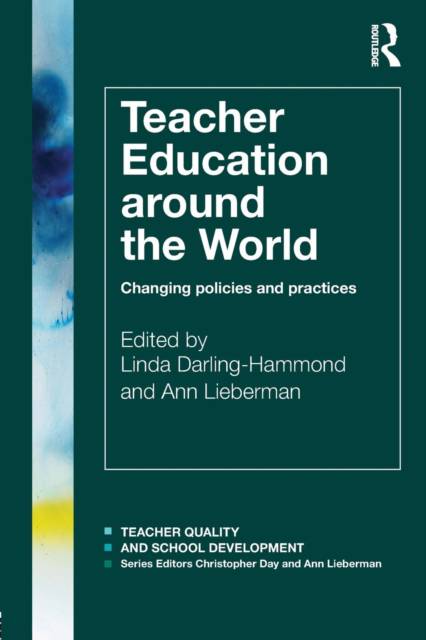
- Retrait gratuit dans votre magasin Club
- 7.000.000 titres dans notre catalogue
- Payer en toute sécurité
- Toujours un magasin près de chez vous
- Retrait gratuit dans votre magasin Club
- 7.000.0000 titres dans notre catalogue
- Payer en toute sécurité
- Toujours un magasin près de chez vous
Teacher Education Around the World
Changing Policies and Practices
Description
Teachers are the most important single element of the education system but what does it take to create high quality teachers in today's world?
Around the world, countries are struggling to understand how to change their schools to meet global demands. International comparisons have shown that schools in Finland lead the league tables, but why is this, what new policies and practices in teacher education have they developed and how do they support the changes? A number of European and Asian countries also top the list when it comes to providing high quality teacher education, but there is little information about what and how they are doing the work and how they have made changes.
The leading international contributors to this book describe the systemic policies and practices of teacher education in eight high-achieving countries and how they are dealing with teacher quality, equity, and the changing global society. Among the countries that are doing well - Finland, Singapore, the Netherlands, the UK, Hong Kong, Canada, Australia and the USA - there is an interesting diversity of policies and practices that support their changes in education, including:
- emphasis on the preparation, induction, support and assessment of new teachers
- focus on teacher retention, teachers' professional knowledge and continuing professional development
- curriculum change and critical policies.
In addition the chapters highlight the local cultural imperatives that influence and shape the preparation of quality teachers and make change both possible and problematic.
Teacher Education Around the World examines what can be learned from the different countries, what policies and practices seem transferable; and which seem embedded in the particulars of the culture of the country. It describe themes that cut across all the countries, documenting not only what they are, but how the countries go about supporting and sustaining changes in teacher education. This book will prove itself an absolute essential for all those involved in teacher education, teaching and educational policy.
Spécifications
Parties prenantes
- Editeur:
Contenu
- Nombre de pages :
- 214
- Langue:
- Anglais
- Collection :
Caractéristiques
- EAN:
- 9780415577014
- Date de parution :
- 24-02-12
- Format:
- Livre broché
- Format numérique:
- Trade paperback (VS)
- Dimensions :
- 155 mm x 231 mm
- Poids :
- 340 g

Les avis
Nous publions uniquement les avis qui respectent les conditions requises. Consultez nos conditions pour les avis.





